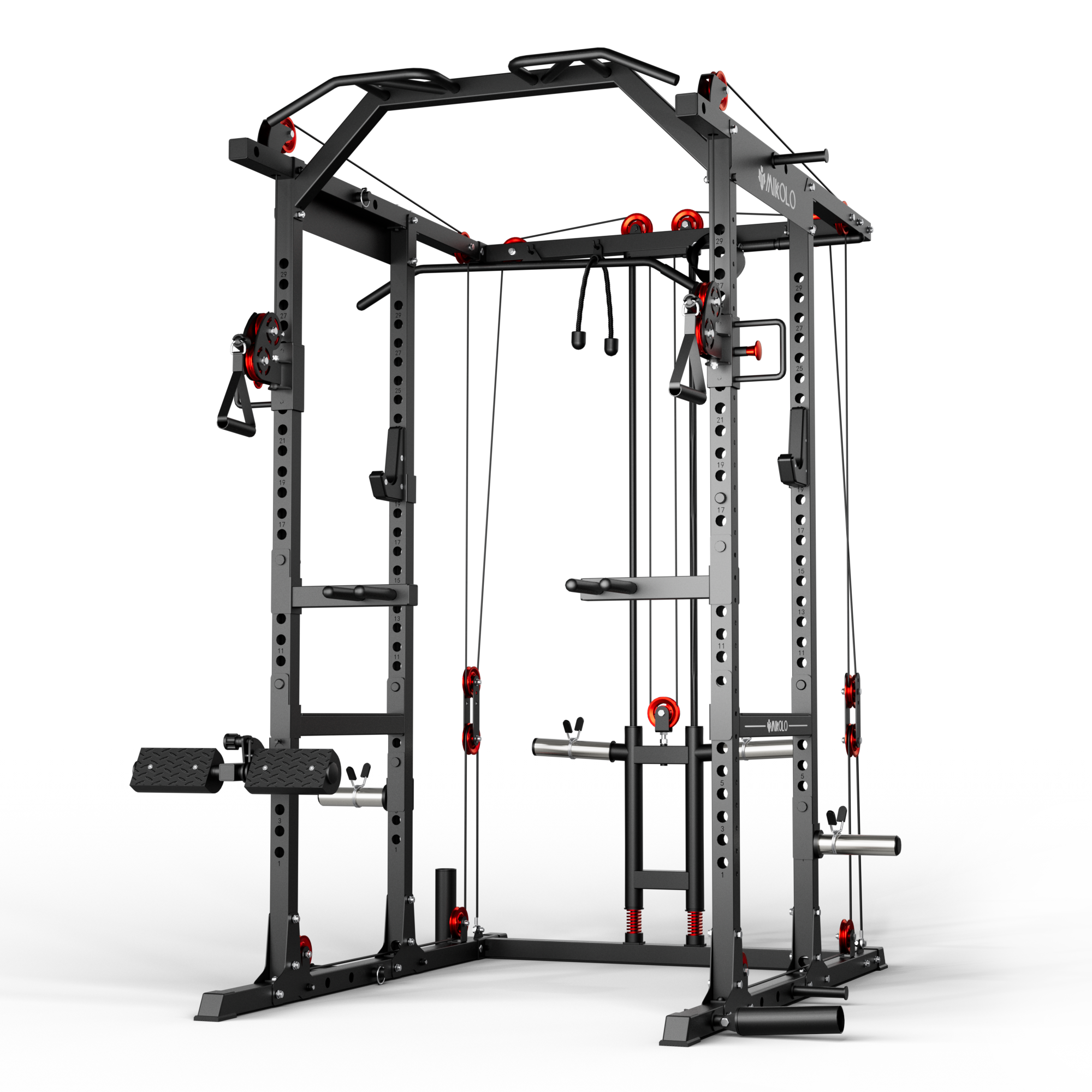When setting up a home gym, space-saving gear is essential—and a 6ft Olympic barbell is one of the most practical pieces of equipment for small areas without compromising training potential. It offers versatility for compound lifts, curls, rows, and even lighter bench or squat sessions, all while being easier to maneuver than a full-sized 7ft Olympic bar.
What Is a 6ft Olympic Bar?
A 6ft Olympic bar, sometimes referred to as a 6-foot barbell or 6 ft bar, is a slightly shorter version of the standard 7ft Olympic bar used in powerlifting and Olympic lifting. It's often chosen by home gym users, women lifters, beginners, or anyone with limited workout space.
While the main shaft diameter and sleeve dimensions often match regulation Olympic sizing (usually a 2-inch rotating sleeve), the shorter shaft results in a lower overall bar weight and load capacity.
How Much Does a 6-Foot Barbell Weigh?
The weight of a 6ft Olympic bar typically ranges between 30–40 lbs (13.6–18.1 kg), though variations exist. Here’s a breakdown based on different naming conventions:
-
6 ft Olympic barbell weight: usually around 33–35 lbs
-
6ft barbell weight or 6ft bar weight: ranges between 30–37 lbs
-
Weight of 6 foot Olympic bar: often quoted as 35 lbs, but some brands offer lighter options closer to 30 lbs
-
6ft standard barbell: sometimes lighter (~20–25 lbs), depending on construction material and sleeve compatibility
If you're wondering how much a 6-foot barbell weighs, it's safe to estimate around 30–35 lbs, but it’s best to confirm with the specific manufacturer since tolerance and materials can affect this.
Who Is It For?
The 6-foot Olympic bar is ideal for:
-
Home gyms with ceiling or wall constraints
-
Smaller lifters or beginners who don’t need the full 45 lb bar
-
Isolated exercises like curls, skull crushers, rows, or upright presses
-
Female lifters who want a more manageable bar without sacrificing sleeve compatibility with Olympic plates
In my personal experience training clients out of my garage gym, many of them—especially beginners or women—feel far more confident learning with a 6ft bar. The reduced length removes intimidation and improves bar control without feeling like they're “settling” for less. It still looks and feels like a serious barbell—and you can use the same Olympic plates you’d use on a 7ft bar.
Load Capacity and Build Quality
Though shorter, most 6 ft Olympic barbells are built to handle 250–390 lbs of weight. Some commercial-grade versions can even exceed that, reaching up to 500 lbs. Always check:
-
Sleeve diameter (should be 2 inches for Olympic plates)
-
Knurling pattern (center knurling is usually absent)
-
Whip and spin (rotating sleeves help during lifts like cleans or snatches)
Keep in mind: a 6 barbell weight capacity of 260–390 lbs is usually plenty for general strength training, even advanced users doing rows, presses, or squats in the moderate weight range.
6ft Olympic Bar vs 7ft Bar: Which Should You Choose?
| Feature | 6ft Olympic Bar | 7ft Olympic Bar |
|---|---|---|
| Length | ~72 inches | ~86 inches |
| Typical Weight | 30–35 lbs | 44–45 lbs |
| Load Capacity | 250–390 lbs | 500–1,500+ lbs |
| Space Required | Low | High |
| Ideal Use | Home gyms, curls, rows | Squats, bench, deadlifts |
| Sleeve Compatibility | Olympic (2”) | Olympic (2”) |
If you’re not maxing out heavy squats or deadlifts, a 6ft barbell will likely meet your training needs while saving you space and effort.
Final Thoughts
The 6ft Olympic barbell is a highly functional tool for lifters of all levels, especially those building strength at home. Whether you're doing bent-over rows, overhead presses, or lighter squats, it gives you serious capability in a more compact form. Don’t overlook it just because it’s a foot shorter—when paired with Olympic plates, it delivers real performance.
And if you're just starting out or have limited room? This might just be the smartest bar you can buy.













































Leave a comment
This site is protected by hCaptcha and the hCaptcha Privacy Policy and Terms of Service apply.